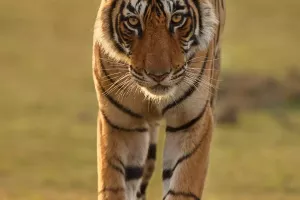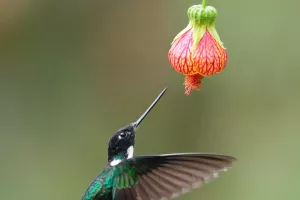The Iberian lynx, also known as the Spanish lynx, is a carnivorous cat. The IUCN ranks the Iberian lynx as one of the three most endangered cat species in the world, and it is also the largest surviving cat native to Europe.
The Spanish lynx is distributed on the Iberian Peninsula in southwestern Europe, mainly in the mountainous forest areas of Spain and Portugal and has a large number in the Coto Donana National Park in Spain. According to a study carried out in March 2005, the Iberian lynx's numbers are gradually declining due to insufficient habitat and some exotic causes. It is estimated that there are as few as 100 Iberian lynx still alive, and in 2000 there were 400, and they were already on the brink of extinction. If they become extinct, they will be the first medium and large cats to become extinct after the saber-toothed tiger. Reproductive populations are only found in Spain's Dognana National Park and the Andujar Mountains in Jaén province.
As we all know, the disappearance of any native species in the ecosystem will have serious cascading effects. The higher the species, the greater the impact. Take the Iberian pear, for example, a small tree that is heat and cold hardy found only in Spain, Portugal and Morocco. They are a sugar-replenishment store for many local animals, and while not rare at the moment, their numbers are declining at a rate comparable to that of some endangered species.
A 2009 study showed that local trees rely on small mammals such as foxes and Eurasian badgers to disperse their seeds. They unconsciously trade with trees, eat the fruit for free, and then take the seeds to other areas, distributing the seeds through defecation, which everyone is good at. But when the local top cat, the Iberian lynx, disappeared, the number of Iberian pears continued to decline, even as those trades continued.
When herbivores are flooded and destroy the ecology, humans started to think of those top predators who have been "taken away" by themselves. Therefore, in recent years, all kinds of big cats and big dogs have been invited back to their happy hometowns. On March 29, 2005, there was news that three little lynx were born in artificial environment for the first time. Four were born in 2006 and 24 in 2008. Following the reintroduction of the Iberian lynx in recent years, there has been a sudden and welcome increase in the distribution and number of Iberian pears.
The number of Iberian lynx increased significantly in 2015, according to data released by the Andalusia government in Spain recently. And it is the largest number of the lynx since it was listed as the most endangered species of cats in the world in 2002. A total of 404 Iberian lynx were recorded in 2015, up from 327 in 2014. The survey also pointed out that a total of 120 breeding female lynxes were found in five locations in Spain and Portugal.
It stands to reason that carnivores do not have a direct effect on plants because they prey on animals. Burgos, an ecology researcher at the University of Rey Juan Carlos in Madrid, was curious to know how the presence of lynx affects the Iberian pear. Burgos and colleagues set up infrared cameras in the Andujar Mountains Natural Park, one of the largest surviving sanctuaries for the Iberian lynx. Infrared cameras can see if the presence of lynx affects where, when and how red foxes, Eurasian badgers and stone martens forage for Iberian pear fruit in the area.
They found that in the lynx's territory, the red fox became very "shy", rarely came to eat fruit, and often just passed by; the stone sable evaporated directly from the world; but the badger was very calm, eating and drinking as usual. And pear orchards outside lynx territory were more popular: Across the study area, 70 percent of foxes and 100 percent of stone mink visits to pear trees occurred outside the lynx's range.
The researchers concluded that the lynx keeps these fruit-eating carnivores moving and may affect the way they disperse pear seeds. Simply put, under the pressure of the lynx, these fruit-eating mammals are forced to eat fruit elsewhere. In this way, they will spread the seeds to farther and more dispersed places through defecation, expanding the growth range of the seeds and reducing their survival pressure. Originally, after these fruits were eaten, they would only be excreted to a short distance. There were too many seeds in the same area, and the competition pressure was high, and the fruit trees naturally did not grow well.
Ecologists and biologists have historically focused on how the return of predators affects prey populations. Now they're starting to realize that the effects of predators are inextricably linked.


